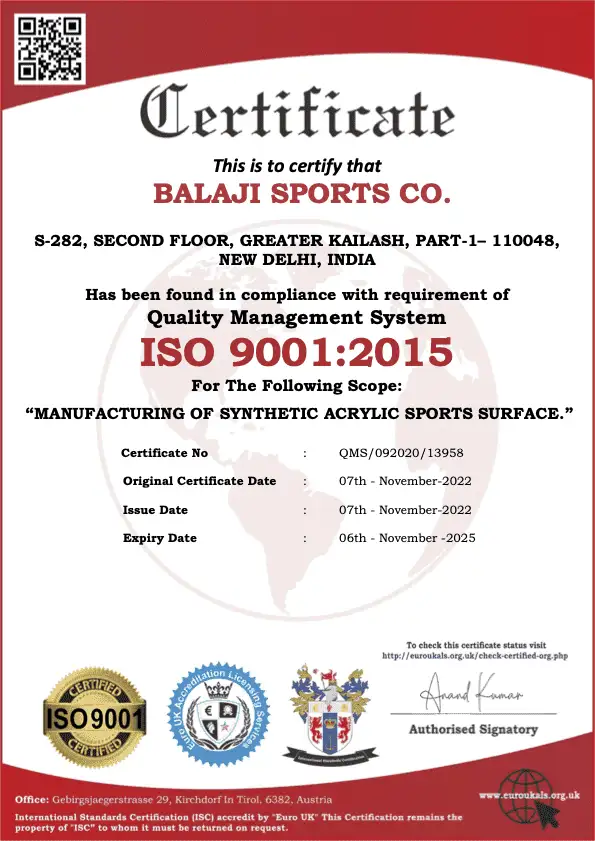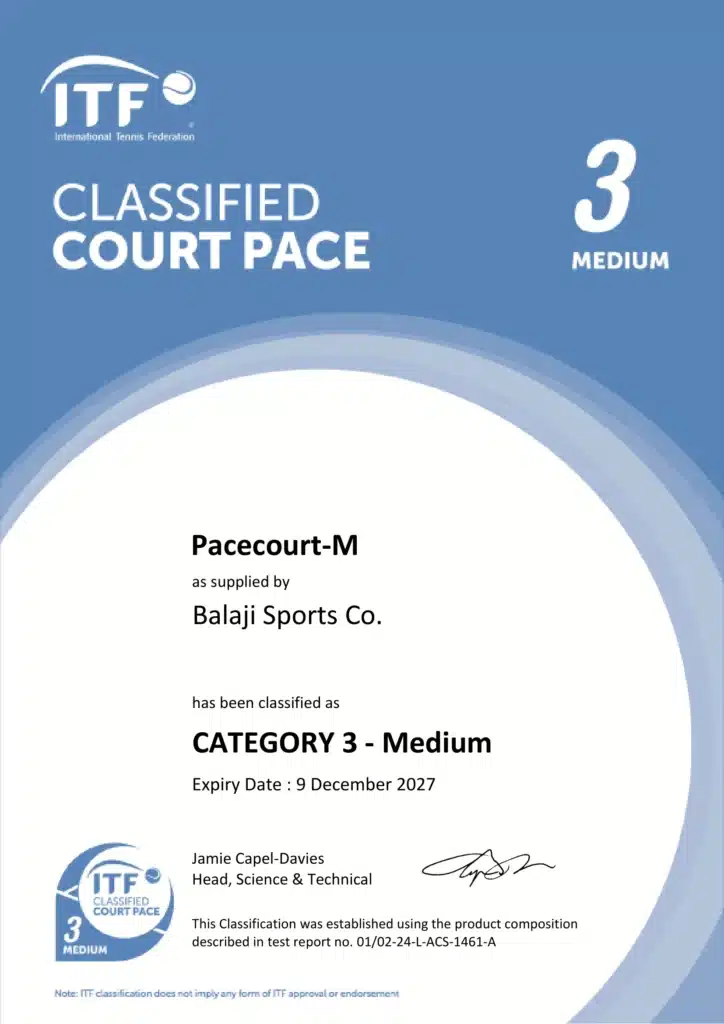What to Expect from a Professional Volleyball Court Installation Team
In today’s fast-paced sports landscape, the demand for high-performance volleyball courts is at an all-time high. A well construction of volleyball court can make all the difference in terms of player experience and safety, regardless of whether it is being constructed for a school, sports academy, club, or residential society. Pacecourt is a well-known brand in India when it comes to the construction of volleyball courts because of its dedication to quality, creativity, and precision. We provide complete end-to-end synthetic volleyball court construction solutions, including high-quality materials and expert technical teams. As one of the best contractors for volleyball courts, we can help you turn your idea into a sports facility that is long-lasting, vibrant, and focused on performance. Why Quality Volleyball Court Construction Matters The construction of a volleyball court surface that facilitates speed, agility, jumps, and safety is as important as the dimensions and lines of a volleyball court. Long-term surface performance, player comfort, and injury prevention of a volleyball court are all greatly influenced by the installation. Every layer matters, whether it is synthetic or concrete, indoors or outdoors. The importance of quality construction in volleyball courts, focusing on player performance, safety, longevity, drainage systems, adhering to regulatory standards, adapting to environmental factors, reducing maintenance costs, and professional expertise. It emphasizes the role of even surface, proper drainage, and accurate measurements in a fair and enjoyable gameplay. It also discusses the impact of weather resistance, wear and tear, and volleyball court construction materials on the court’s lifespan. Hence working with expert professionals like Paceourt is a value added to your volleyball court. What Makes Pacecourt a Leading Volleyball Court Contractor? At Pacecourt, we go beyond volleyball court materials. Every project gets our world-class flooring systems, site analysis, custom design, and engineering expertise. Here’s what sets us apart from other volleyball court contractors: Synthetic Volleyball Court Construction: Future of Play Concrete courts are a thing of the past. The construction of synthetic volleyball courts is the choice of the majority of institutions and clubs today, and for good reason. Comfort for the player and shock absorption, Synthetic surfaces offer better bounce and cushioning, reducing strain on knees and joints during intense play. Unlike traditional surfaces, synthetic volleyball courts withstand heat, rain, and UV exposure. This guarantees season-to-season consistency in playability. Our synthetic systems are anti-fungal, non-porous, and require little upkeep. Just routine cleaning is enough to maintain aesthetics and performance. Synthetic acrylic volleyball courts are available in vibrant colors like terracotta red, green, blue, and grey, giving modern sports facilities a high-end appearance. Pacecourt’s synthetic systems are engineered with multi-layer coatings—each layer designed to improve grip, resilience, and surface consistency. Our cushion coats and color coats meet global standards for ball bounce and slip resistance. Volleyball Court Installation in Steps Here’s how Pacecourt handles each stage of a typical synthetic volleyball court construction project: Why Choose Synthetic Court Over Other Court Types? While clay or concrete surfaces may seem cheaper, they come with high maintenance and a shorter lifespan. Synthetic volleyball court construction offers long-term performance, safety, and aesthetic value that outweighs initial costs. Here’s a quick comparison: Feature Concrete Court Synthetic Court Shock Absorption Low High UV Resistance Low High Aesthetic Appeal Basic Vibrant Maintenance High Low Weather Resistance Poor Excellent With Pacecourt, you get all the advantages of synthetic flooring, backed by a legacy of innovation and engineering. Ideal for All Settings: Whether you’re building a court for a: The volleyball court installation services provided by Pacecourt are tailored to the particular setting and anticipated traffic. Our Reach Across the Nation As one of the most trusted volleyball court contractors in India, Pacecourt has successfully executed projects in: No matter your location, our project managers ensure a hassle-free installation process from start to finish. Case Study In order to solve persistent problems with their old tiled surface a private sports academy in Chennai, approached Pacecourt. Regular cracks, slick areas, and uneven bounce had made the old court dangerous, resulting in injuries and constrained training plans. In search of a top-notch solution that would endure Chennai’s coastal climate and improve player comfort and performance. Pacecourt offered a multi-layered, custom acrylic system that included weather-resistant finishes, cushion coating, and UV-stable color layers. The court, which included line marking, was built over a fresh concrete foundation and finished in 12 days. The change happened instantly. Coaches reporting better grip, smoother footwork, and safer landings, enabling longer practice sessions without fatigue or injury risk. The bright surface finish, minimal upkeep, and quick recovery time were all valued by the academy. To ensure long-term durability, the Pacecourt team also provided basic court care training to their employees. Pacecourt furthered its standing as a leading synthetic volleyball court contractor in Chennai with this project, providing quick, practical, and future-ready sports surfaces all over India. Conclusion The game of volleyball demands explosive movement, quick reflexes, and intense physicality. A mediocre surface can lead to injuries and poor gameplay. But with Pacecourt’s synthetic volleyball court construction, you can be assured of a surface that supports performance, safety, and longevity. When it comes to choosing volleyball court contractors, don’t settle for less—choose the experts. Pick Pacecourt. Frequently Asked Questions







